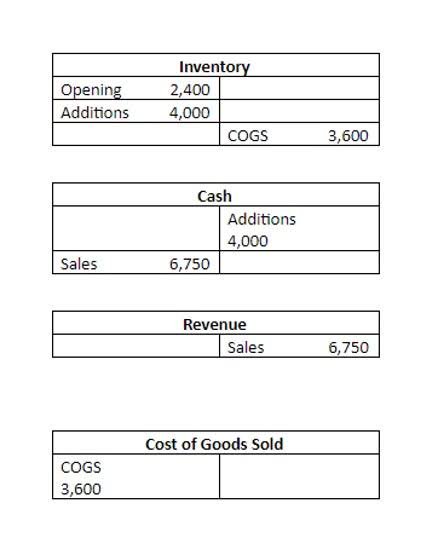
If a company decides not to pay dividends, and instead keeps all of its profits for internal use, then the retained earnings balance increases by the full amount of net income, also called net profit. The process of calculating a company’s retained earnings in the current period initially starts with determining the prior period’s retained earnings balance (i.e., the beginning of the period). From a more cynical view, even positive growth in a company’s retained earnings balance could be interpreted as the management team struggling to find profitable investments and opportunities worth pursuing. The formula to calculate retained earnings starts by adding the prior period’s balance to the current period’s net income minus dividends. Scenario 2 – Let’s assume that Bright Ideas Co. begins a new accounting period with $250,000 in retained earnings. When the accounting period is finalized, the directors’ board opts to pay out $15,000 in dividends to its shareholders.
Company
For investors and financial analysts, retained earnings are essential since they offer in-depth insights into a company’s long-term growth potential. A company with a high level of retained earnings indicates that it has been able to generate consistent profits, which can be used for reinvestment in the business or to fund future growth opportunities. This figure is the result of subtracting total business expenses from revenue, reflecting the company’s profitability over the current period. Here is an example of how to prepare a statement of retained earnings from our unadjusted trial balance and financial statements used in the accounting cycle examples for Paul’s Guitar Shop. Retained earnings (RE) are essentially the net profits a company chooses to keep after paying dividends to shareholders. ending re formula They play a critical role in funding growth initiatives, research and development, and improving financial stability by paying down debt.

Terms Similar to the Retained Earnings Formula
For our retained earnings modeling exercise, the following assumptions will be used for our hypothetical company as of the last twelve months (LTM), or Year 0. While manually entering the CAGR calculation is straightforward, Excel offers functions that can make your life even easier. The POWER function is particularly useful when dealing with exponential calculations like CAGR.

Example of retained earnings calculation
CAGR takes all this volatility and boils it down to a single number, giving you a clearer picture of your investment’s performance over time. This is particularly useful for comparing different investments or projecting future growth. By inputting your initial data points, Sourcetable’s AI can instantly compute retained earnings using real-time data, freeing you from manual calculations and reducing the risk of errors. Other operating expenses include bookkeeping and payroll services sales revenue, cost of goods sold, and depreciation. Non-cash items such as write-downs or impairments and stock-based compensation also affect the account.

Those owners might be stockholders, or they could be private shareholders. In other words, it tells you what percent of your net income you’re keeping, rather than paying it out to shareholders. Retained earnings can also be reported as a percentage of total earnings, known as a retention ratio. Similar to the second input is current year profit or loss, which may be positive or negative depending upon how the company performed.
- An investor can make an idea through trend analysis whether the company is retaining its profit or its paying part of profits as dividends.
- For traded securities, an ex-dividend date precedes the date of record by five days to permit the stockholder list to be updated and serves effectively as the date of record.
- Sourcetable is an AI-powered spreadsheet that seamlessly integrates an AI assistant capable of executing complex calculations on demand.
- Always consider other factors like market conditions, investment risk, and personal financial goals when making decisions.
- To accurately compute retained earnings, which reflect a company’s accumulated profit after dividends, one must understand its components and the formula used for calculation.
- For our retained earnings modeling exercise, the following assumptions will be used for our hypothetical company as of the last twelve months (LTM), or Year 0.
This helps complete the process of linking the 3 financial statements in Excel. Handling financial statements requires precision and understanding of key financial metrics. One crucial metric is retained earnings, which is fundamental for assessing a company’s reinvestment opportunities and financial health. To calculate retained earnings, the formula is Beginning Retained Earnings + Net Income – Dividends. Dividends paid in cash result in an outflow of cash, resulting in a net reduction on the books.
Enhance Your Calculations with Sourcetable

This balance can be both in the positive or the negative, depending on the net profit or losses made by the company over the years and the amount of dividends paid. The beginning period retained earnings is the previous year’s retained earnings, as appears on the previous year’s balance sheet. Retained Earnings are reported online bookkeeping on the balance sheet under the shareholder’s equity section at the end of each accounting period.
Calculate Retained Earnings on a Balance Sheet

The retained earnings amount can also be used for share repurchases which can help improve the value of your company stock. Investors are primarily interested in earning maximum returns on their investments. When they know that management has profitable investment opportunities and have faith in the management’s capabilities, they will want management to retain surplus profits for higher returns. Below is a short video explanation to help you understand the importance of retained earnings from an accounting perspective. To use this function, simply replace the earlier formula in your “End Value” column with the one above.
